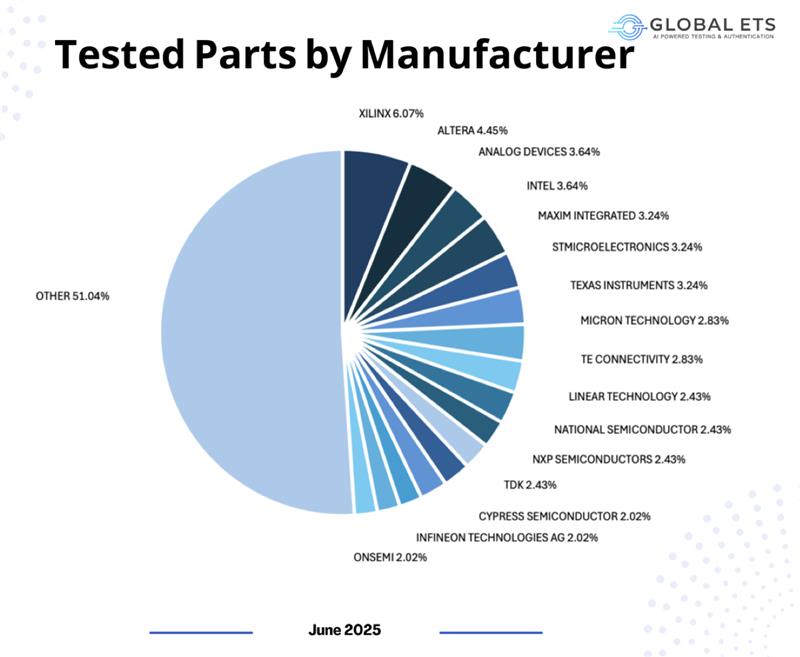The electronics industry faces yet another challenge as Intel’s Altera division announces significant price increases across its FPGA (Field-Programmable Gate Array) product lines. Starting in Q1 2025, prices will rise by 7%, 10%, and 20%, depending on the specific product category. This move comes in response to mounting market pressure, increased operational costs, and the escalating influence of AI technologies, which are driving up demand for high-performance components.
For electronic contract manufacturers and engineers, the implications of this decision go far beyond simple price adjustment. From growing delays in lead times to complications in managing project costs, especially when sourcing board level electronic components, Altera’s adjustments are just the tip of the iceberg. Adding to this complexity is the broader context of geopolitical tensions, particularly the ongoing U.S.-China trade war, which continues to unsettle the global electronics supply chain.
This article dives into why Altera is increasing prices, what these changes signify for professionals in electronics and manufacturing, and how you can adapt to this evolving landscape.
What’s Driving Altera’s Price Hike?
Rising Operational Costs and Market Pressure
FPGA manufacturers are feeling the squeeze from increasing operational costs. The semiconductor industry has faced prolonged periods of material shortages, surging energy costs, and supply disruptions since the global pandemic. Altera’s price adjustments reflect its need to maintain profitability amidst these ongoing challenges.
According to market analysts at Gartner, semiconductor manufacturing costs jumped by over 8% in 2024 alone due to disruptions in raw material supply. For a business that thrives on intricate supply chains and significant energy consumption, these margins become increasingly difficult to absorb.
The AI Boom’s Role in Driving Demand
The explosive growth of artificial intelligence (AI) has caused seismic shifts in tech manufacturing. FPGAs are in particularly high demand because of their ability to perform rapid data processing and enable machine learning algorithms. Businesses in industries such as IoT, automotive, and healthcare are adopting FPGA technology, creating massive pressure on the supply-and-demand balance.
The same Gartner study highlighted that global FPGA demand is expected to grow by 15% annually between 2024 and 2028, fueled mainly by AI-driven applications. Unsurprisingly, this high demand for cutting-edge technology is putting upward pressure on prices for key components.
Geopolitical Tensions and Their Ripple Effects
Adding to the mix is the ongoing U.S.-China trade war. With tariffs on semiconductors and components, manufacturers are finding it harder to import essential materials at competitive prices. For Altera, this geopolitical environment means higher tariffs, logistical challenges, and reduced options for sourcing material costs that inevitably trickle down to customers in the form of steeper product prices.
How These Price Hikes Affect the Electronics Industry
Extended Lead Times
With higher demand for FPGAs, electronic contract manufacturers and engineers can expect delays in getting their hands on critical components. Orders may see lead times of 12 weeks or more, especially for high-capacity chips tailored to AI applications. This poses operational challenges for manufacturers with tight project deadlines.
Strained Budgets for Projects
The 7% to 20% price hikes will likely force companies to readjust their budgets, particularly for large-scale projects relying heavily on FPGA components. Cost overruns could become a new normal unless strategies are implemented to optimize spending elsewhere.
Ripple Effects Through the Supply Chain
Altera’s decision may prompt similar actions from other major FPGA suppliers trying to offset their own operational costs. This cascading effect could tighten global supply chains even further.
How to Respond to the Altera Price Increase
While these price hikes are concerning, there are several proactive steps electronic engineers and contract manufacturers can take to adapt effectively.
1. Diversify Component Suppliers
Avoid heavy reliance on a single supplier. Look to diversify your sourcing against Altera’s competitors—brands like Xilinx (now part of AMD) and Microchip Technology also offer leading FPGA solutions that might better fit your budget.
2. Audit Your Inventory
Conduct an inventory audit to ensure you’re using current resources efficiently. Stockpiling FPGA products critical to production can help offset potential shortages or future price increases.
3. Explore Design Alternatives
Collaborate with your engineering teams to explore alternative chipsets or architectures that could replace high-cost FPGAs for specific applications without compromising performance.
4. Negotiate Long-Term Contracts
Locking in pricing agreements for essential components can shield your business from sudden price hikes while ensuring smoother supply continuity.
5. Leverage AI for Logistics
Ironically, while AI is driving the demand for FPGAs, it can also assist in optimizing your manufacturing operations. AI-powered supply chain management tools can streamline your logistics, reduce waste, and find cost-saving opportunities, making your business more resilient to component price changes.
How Altera’s Price Changes Reflect Broader Trends
Altera’s decision underscores a broader trend in the semiconductor industry. FPGAs, once considered niche components, are now vital due to their versatility and compatibility with cutting-edge technologies like AI. This shift in valuation is prompting suppliers to rethink their pricing strategies, particularly as R&D investments in AI and machine learning grow.
For electronic engineers, this marks a paradigm shift in how FPGAs are integrated into system design. Being aware of these changes and adapting to infrastructure sooner rather than later will ensure organizations remain competitive in such a rapidly shifting market landscape.
Keep Moving Forward
There is no denying that Altera’s price hikes present challenges, but they also reveal an undeniable truth—enterprise-level demand for innovation is at an all-time high. Companies that effectively adapt to these shifts will not only weather the storm but thrive in an increasingly competitive market.
Stay agile, be proactive in sourcing materials, and use innovative tools to streamline your business processes. These steps will help ensure that increased pricing trends don’t slow down your momentum.
If you’re an electronic engineer or contract manufacturer facing sourcing challenges, be sure to keep monitoring industry updates and adapting accordingly. Preparation and strategic partnerships are your best defenses.




